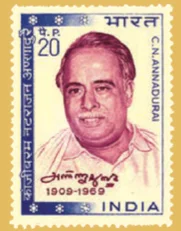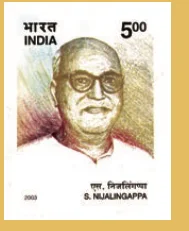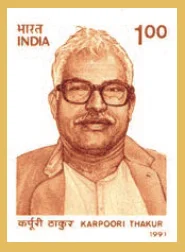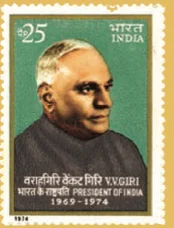![]() 26 Jul 2024
26 Jul 2024
After the Congress split, Indira Gandhi’s government became a minority, still functioning with support from parties like CPI and DMK. To solidify her position and seek a popular mandate for her initiatives, she recommended the dissolution of the Lok Sabha in December 1970, leading to elections in February 1971.
Formation of the Grand Alliance: Despite the organisational strength presumed to lie with Congress(O), many opposition parties formed the “Grand Alliance,” consisting of SSP, PSP, Bharatiya Jana Sangh, Swatantra Party, and Bharatiya Kranti Dal.
Election Outcome: The 1971 election outcome was staggering. Congress(R) and CPI secured 375 Lok Sabha seats, with 48.4% of the votes (Figure 5.11).
Birth of Bangladesh: Following the elections, the East Pakistan crisis erupted, culminating in the Indo-Pak war and the creation of Bangladesh.

| Key Figures | Details |

C. N. Annadurai |
|

Ram Manohar Lohia |
|

K. Kamaraj (1903-1975) |
|

S. Nijalingappa (1902-2000) |
|

Karpoori Thakur (1924-1988) |
|

V.V. Giri (1894-1980) |
|
| Must Read | |
| Current Affairs | Editorial Analysis |
| Upsc Notes | Upsc Blogs |
| NCERT Notes | Free Main Answer Writing |
The era of the late 1960s and early 1970s stands out as a pivotal juncture in Indian politics, characterised by Indira Gandhi’s indomitable spirit and strategic political acumen. By navigating factional battles, championing socio-economic reforms, and redefining the identity of Congress party, she not only solidified her position but also reshaped India’s political discourse. However, while her leadership brought about significant consolidations, it also laid the groundwork for future political tensions and challenges to India’s democratic fabric.
Timeline
| YEAR | EVENT |
| May 1964 | Death of Jawaharlal Nehru: India’s first Prime Minister and a towering figure in Indian politics, Jawaharlal Nehru passes away. |
| June 1964 – January 1966 | From Nehru to Shastri: Lal Bahadur Shastri assumes office as the second Prime Minister of India. His tenure, though short-lived, is marked by his famous slogan, “Jai Jawan, Jai Kisan.” |
| January 1966 – March 1977 | From Shastri to Indira Gandhi: Indira Gandhi becomes the Prime Minister of India, marking the beginning of a transformative era in Indian politics. |
| February 1967 | Fourth General Elections: The Congress party faces significant challenges but manages to form the government at the centre. However, it loses power in several states. |
| 1967 onwards | Rise of Non-Congressism: Opposition parties begin to rally under the principle of “Non-Congressism,” aiming to offer a combined challenge to the Congress’s dominance. |
| February-March 1967 | Assembly Election Results: The Congress suffers losses in several key states, highlighting the party’s waning dominance in Indian politics. |
| 1967-1969 | Coalitions and Defections: Politics of alliances and counter-alliances emerge, with defections becoming a significant issue. |
| The late 1960s | Rise of the Congress Syndicate: The internal power centres within the Congress, known as the “Syndicate,” become influential and often at odds with Prime Minister Indira Gandhi. |
| December 1969 | Abolition of Privy Purse: Indira Gandhi’s government takes the bold step to abolish the Privy Purse, seeking to end the hereditary privileges of the former royal families. |
| February 1971 | The 1971 Election and Restoration of Congress: Against most predictions, Indira Gandhi’s faction of the Congress emerges overwhelmingly victorious in the Lok Sabha elections, restoring the party’s dominant position in Indian politics. |
Glossary
|
| Related Articles | |
| Indira Gandhi: Death, Iron Lady of India, Biography and Legacy | 2024 Lok Sabha Election Results |
| Indian National Movement | ECONOMIC DEVELOPMENT |
<div class="new-fform">
</div>